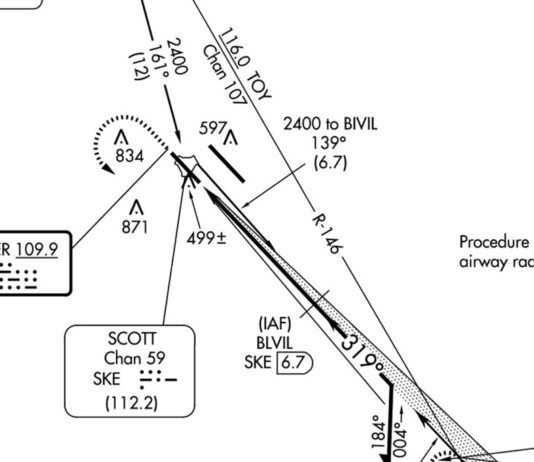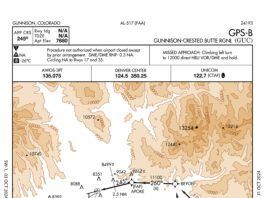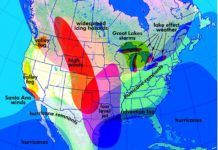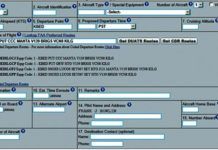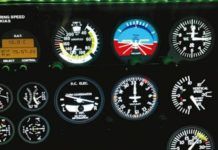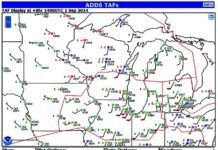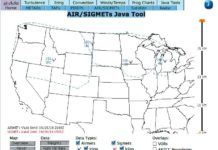Briefing: December 2014
In October, Gulfstream announced it will add two new wide-cabin business jets to its line: the Gulfstream G500 and G600. The first G500 is already built, and taxied to the unveiling event in Savannah, Georgia. The company also revealed a 70-foot-long mockup of the G600, which it displayed a week later at the NBAA convention. Both jets carry up to 19 passengers in extra-wide cabins, and both can fly up to Mach 0.925, the same top speed as Gulfstreams G650 and G650ER. The cockpits feature active control sidesticks and touchscreen avionics. The G500 will start deliveries in 2018, with the G600 to follow a year later, the company said.
Radar Service Gotchas
An instrument-rated pilot called me a while back, seeking an IPC to prepare for a trip he wanted to make. Unfortunately, it had been nearly a year since hed flown at all.
It’s Just A Certificate
What is that green piece of plastic sent to you by our friends in Oklahoma City called? If you answer license, crack open the regulations. The FAA issues certificates, not licenses. This bit of precision is useful for winning bar bets with flying buddies-serves them right for not reading IFR-as well as understanding the regulatory structure of certification; particularly, the advantages of certification over licensing.
Autumn Changes
Fall conjures memories of bright blue skies, cool mornings and generally good daytime flying. But in aviation, looks can be deceiving. New air masses are on the move, the jet stream begins to flex its muscle over much of the United States, fronts are marching southward, and theres likely a tropical storm in the Caribbean or the Gulf. How does this affect your flying and how can you avoid an unplanned turn of events?
Required Reports
For this look, well cover about half of the reports other than position reports per 14 CFR 91.183(a) that Fred Simonds briefly mentions in his Radar Service Gotchas on page 14. Well thoroughly cover those later.
Coded Departure Routes
Pilots want ways to mitigate bad weather. The Coded Departure Route (CDR) is one of the least-known such tools in GA, although its been available since 2007. The AIM tells us, CDRs provide air traffic control a rapid means to reroute departing aircraft when the filed route is constrained by either weather or congestion. So, if youd rather not wait, a CDR might be for you.
How to use a Simulator
When we started our sim-training business, we thought our strongest selling point would be logging cheaper time, such as the 20 hours of the instrument tickets required 40. We were wrong. The sim is a more efficient pilot training environment and shouldnt be seen as a replacement for the airplane. Time logged is a nice bonus, but the real value is the learning efficiency and effectiveness. Once pilots and CFIs understand this, the training opportunities are vastly expanded.
Weather Planning
Preflight weather planning has long consisted of calling an FAA Flight Service Station. Years ago, you might have even visited one. But, using the Internet, you can now draw on the same resources that meteorologists use. While the 2000s brought weather data to the cockpit, were now getting some Internet tools to the cockpit via dedicated datalink. Although we cant yet cheaply surf the web at cruise, we connect to the Internet at the FBO, on the ramp and in the plane on the ground, using phones and tablets with WiFi and cellular data.
Tips for Weather Planning
Remember that web sites outside the FAA and NWS domains should be considered supplementary tools to be used in combination with a weather briefing through official sources.
Readback: November 2014
Toward the end of his excellent article, Gaming the System in the August issue, Mr. Kramer talks of cancelling IFR when the frequency is busy and you have gone into VFR conditions. I have always tried to do this to relieve ATC of unnecessary responsibilities.However, this may be a little different in Bravo airspace. On a westbound flight through Washingtons Class B, I cancelled IFR after passing Baltimore and many of the buildups. The controller thanked me, replying, Maintain VFR, report any changes in course or altitude. A few minutes later I had more buildups in front of me. I reported it, and worked my way through. I have always wondered under circumstances like this if I had returned to IFR what the proper communications would have been in the Bravo air space.
Holes You Should Know About in Official WX Products
Few pilots know that FAA imposes a hard character limit on text products such as Convective SIGMETs and the Area Forecasts (FA). The Aviation Weather Center (AWC) has a check program for the Area Forecast that counts the number of characters. On busy weather days when these forecasters have a lot to mention in the forecast, they often bust the character count. This forces them to cut from either the text or the synopsis in order to make the size fit through the National Airspace Data Interchange Network (NADIN) hubs. Often the first casualty is the ellipsis (...). Forecasters can use two periods instead of three. Another casualty is the synopsis. Of course, the last resort is to cut from the text of the FA.
Future Flight
Technological advances in aviation are few, slow and occur in small increments. Aside from composite materials, airframes are essentially unchanged over the last 70 years. Engines? Well, there have been a few interesting attempts to modernize, but even the antiquated magneto spark remains dominant. So, the aviator seeking the latest advances has to focus on electronics, which, fortunately, are evolving at a remarkably fast pace.

